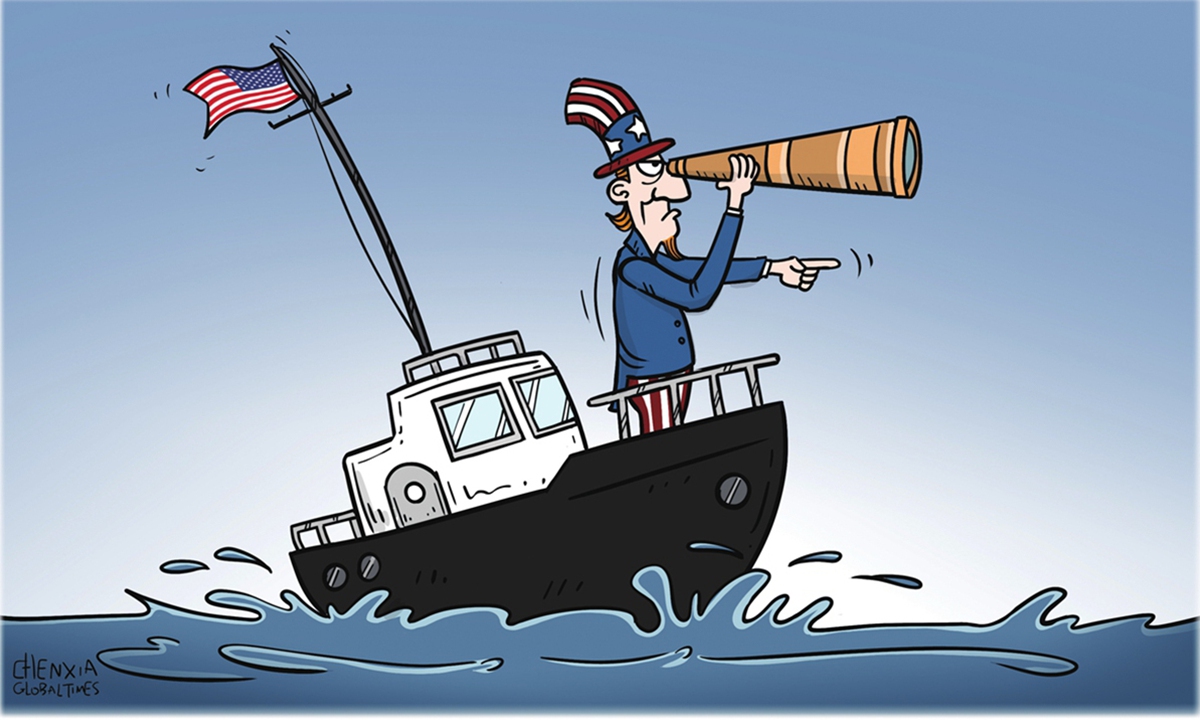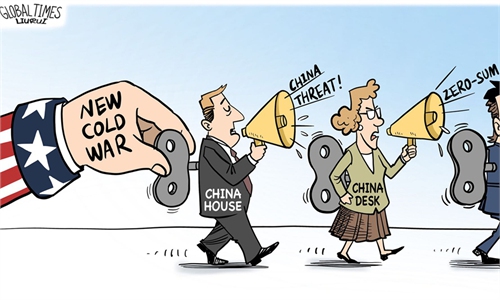
Illustration: Chen Xia/GT
Recently, US Secretary of State Antony Blinken and Secretary of Defense Lloyd Austin held a 2+2 ministerial meeting with visiting Australian Foreign Minister Penny Wong and Deputy Prime Minister and Defence Minister Richard Marles. The joint statement issued after the meeting stated that the two countries would strengthen defense cooperation, including supporting the upgrading of Australian military bases.
In fact, US' support for upgrading Australian military bases had already attracted attention. In June, the US Navy released a construction tender for various base infrastructure in the "Indo-Pacific region." Australia's external territory in the Indian Ocean, the Cocos Islands, was included in the list of possible project locations under the Pacific Deterrence Initiative (PDI), along with the Philippines, Timor-Leste and Papua New Guinea. The purpose of this initiative is to strengthen US force posture and infrastructure in the Indian and Pacific Oceans to "counter China."
The Cocos Islands have a total area of 14.2 square kilometers, with only West Island and Home Island being inhabited, with a total population of about 600 people. The islands have a fragile ecological environment and limited carrying capacity. They are situated over 2,600 kilometers from the Australian mainland and are not suitable for the construction of a large military base.
During major military competitions and strategic games throughout history, these islands have remained largely unknown. The US military's current plan to turn them into a military base clearly indicates the increasingly desperate measures the US is resorting to in order to execute its intense competition with China.
The so-called strategic significance of these islands is largely fabricated. Some analyses claim that the Cocos Islands are "closer to the Strait of Malacca, a chokepoint for half of China's oil shipments, than the US Navy base of Diego Garcia." In reality, the islands are more than 1,000 kilometers from the Sunda Strait and around 2,000 kilometers from the outer edge of the Indian Ocean side of the Malacca Strait.
Given that the littoral states of these straits, particularly Malaysia and Indonesia, are unwilling to choose sides, and considering the unique and complex geopolitical environment of the region, the US military's efforts to monitor or block Chinese vessels would theoretically need to occur at both ends of these straits - the South China Sea and the Indian Ocean. Deploying the US Navy's broad-area surveillance aircraft to the Cocos Islands might barely allow for monitoring vessels entering and exiting these straits. However, this would require the construction of large-scale air stations and auxiliary facilities, along with costly logistical support. To effectively blockade these shipping lanes and surrounding sea areas would require a large-scale naval and air force presence. The Cocos Islands would most likely be unable to support this. However, such exaggerated narratives over the significance of the Cocos Islands can be politically advantageous for the US military. As competition between the US and China intensifies, any theory or possibility that could potentially support efforts to counter China receives serious attention from the Pentagon. For the US, establishing a blockade network by positioning forces on key islands within the first and second island chains and their surrounding areas can help counter China's "maritime rise." In this strategic context, while reinforcing existing bases in the Asia-Pacific, the US military has also started actively seeking new forward bases.
Driven by great power competition and a fixation on absolute national security, the US is escalating its competition with China across Southeast Asia, South Asia and the South Pacific, aiming to transform nearly every viable island into a forward base. Unlike existing US military bases in Japan and South Korea, these potential new outposts, despite their strategic significance, often face challenges with poor infrastructure and limited self-sufficiency. Implementing the Pentagon's envisioned strategy would require massive and sustained investment, a challenge even for the well-funded US military. Given the astronomical costs involved, the budget allocated under the Pacific Deterrence Initiative amounts to only an initial "venture capital" investment. Currently, the Cocos Islands are only under consideration for construction projects under the PDI, and it remains highly uncertain whether these projects will come to fruition.
A key issue is that the US military already has an extensive network of bases worldwide. Additionally, the economic and social costs of maintaining these overseas bases are rising. For these anticipated new projects, the US military even needs to provide economic aid to the regions to support project construction.
The strategic competition and military rivalry initiated by the US against China are increasingly becoming a cost-efficiency contest. Building a military base on a remote territory like the Cocos Islands contradicts this cost-efficiency principle. However, driven by "political correctness" and strategy, the US military remains relentless in pursuing new forward bases. Even though the US military budget is the largest in the world, adding more military bases cannot ease Washington's strategic anxiety.
The author is the director of the South China Sea Strategic Situation Probing Initiative (SCSPI). opinion@globaltimes.com.cn

